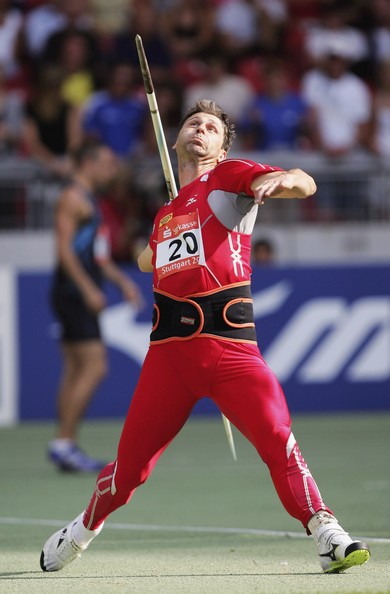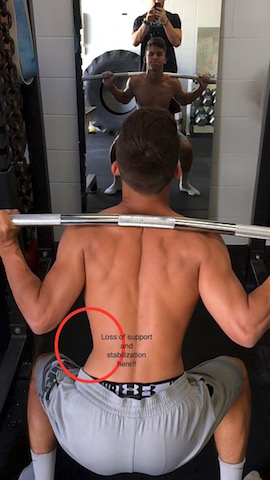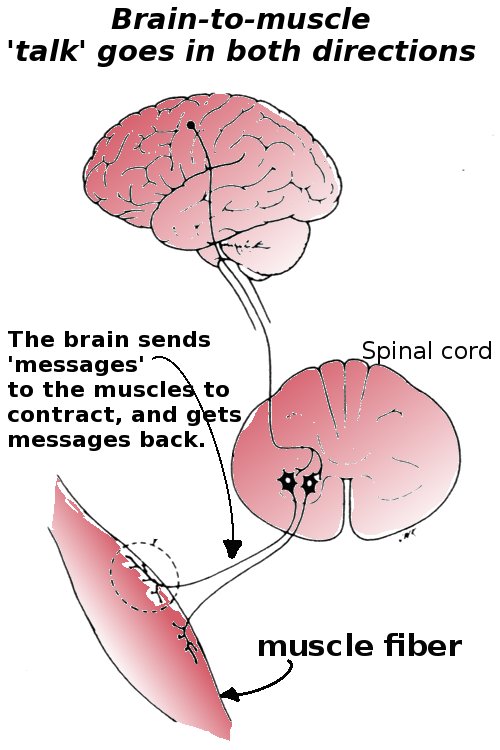Blending Dynamic Neuromuscular Stabilization and Strength and Conditioning
Dynamic Neuromuscular Stabilization (DNS) gives the practitioner and strength coach an ability to do magic. It is the single most powerful understanding of ideal joint positioning, whether static or dynamic. It is arguably the most powerful corrective exercises out there, and when blended with strength and conditioning, it creates monsters. Combining the three components is insanely powerful and allows you to make changes and improvements fast. I’m talking increased throwing velocity after day 1, simply because of the neural changes that are taking place. However, Pavel (DNS Founder), and the other top DNS practitioners, all fall under the umbrella of clinicians. I as a strength coach, face a slightly more difficult challenge. How can you effectively blend DNS and Strength and Conditioning? How can I use these concepts to not just get kids moving better, but also running faster, squatting more, and throwing harder. Well ladies and gents, this is what I’ve found so far.

DNS and Joint Positioning
If you truly understand ideal joint positioning and ideal posture, your ability to evaluate your athlete’s movements changes. I'm not saying that everything turns into rainbows, but I am saying that you start searching for unicorns. When I say unicorns, I mean someone that has perfect movement patterns. If you’ve been to a DNS course, you would know that there are very few unicorns out there, but some elite athletes like Federer, Jan Zelezney and Djokvic, may fall into this category.

Your new eyes, aka your new complex understanding of movement, is what allows you to really take athletes to the next level. Imagine watching an athlete throw or squat and being able to instantly compare that movement pattern to ideal movement. You get insight on what is the fastest way to make that athlete better. Each poorly positioned joint, break in stabilization, and inefficient movement patterns will increase that athletes risk of injury, and ability to perform. Think Jenga…each block you remove and restack increases the risk of collapse!
This concept holds true to every single movement, everything athletic, and every aspect of life. Recently I posted a video on one of my athletes squatting. He runs a laser timed 4.4 - 40 (that's fast). To most, his squat pattern would look flawless, but when comparing the squat to the loading and movement patterns of a unicorn, it doesn’t line up. This athlete loses stabilization along his right side and this loss of stabilization can negatively impact his performance. This loss of stabilization leads to low back pain and also limits his performance; he could be running 4.3 and have a 36 inch vertical instead of 34. You begin to extend careers, decrease pain, and make monsters.

DNS Corrective Exercises
DNS is based on Pavel’s work with Neural Developmental Patterns. In other words, how we progress from birth, to rolling over, to crawling, to squatting, and eventually walking. Time spent in each development position establishes greater stabilization and ideal joint position under increased loads. When completed in enough time, we developed the ability to walk.

Each developmental position accomplishes a specific movement goal. At 3 months we establish stability in the sagittal plane, at 5 months we begin side supporting and establishing ipsilateral movement patterns (throwing a baseball, hitting a golfball/baseball/volleyball) which requires stability in both the frontal and transverse planes, and then at 12 months we then begin to squat and walk. When looking at my junior high, high school, collegiate athletes and professionals, you can see breaks in ideal movement patterns. By coaching them back into these ideal positions, we get real changes that occur at the neurological level. And when adding load under the newly established movement patterns, things really stick.
The changes that take place happen at the neurological level. If we think about movement for a second, it is our nervous system that runs the show. Your nervous system is responsible for keeping joints in the position required for movement, with abnormal motor control potentially causing what athletes perceive as knots, adhesions and tightness. It is our nervous system that is keeping your shoulder in that crappy position when you bench and throw, causing you to have pain. Looking for a fix shouldn’t only involve the joint that’s tight. Don’t disrespect your body and think foam rolling your IT band is going to fix an issue. It might temporarily relax the region, but come tomorrow it’ll feel just as awful.

Here is a quick example…An athlete comes in and you notice tight pecs, lats, posterior capsule, and bicep tendon issues. The common thought is to stretch what’s tight, foam roll and use a lacrosse ball on what’s tight, and do Rotator cuff and increase pulling work. So we focus specifically at the problem site. However, DNS will teach us that all movement takes place on a global level. This person will feel better the days he stretches and rolls out due to the TEMPORARY physiological changes taking place within the problem regions. However, a few hours later, the changes often return to their original subpar baseline, and the issues stick around.
Personally, this isn’t good enough for me and it shouldn’t be good enough for you.
Instead of spending all that time stretching and rolling, what if you actually tried to reactivate ideal joint positioning at the neurological level? Think changes might occur faster? Let me tell you, they do. If you think, well maybe they are only temporary changes like stretches. Well, lucky for you, each of the corrective positions that we use with DNS are already stored in our brains, and will always be in there. Although grounded in sound science, DNS and its application specifically is still mostly theoretical from a scientific standpoint. The rate at which we can correct the patterns is dependent on how deep the poor movement patterns are buried.
The beauty of DNS corrective exercise is that they all involve global movement patterns. For example, let’s look at a baseball player who complains of groin issues when he squats and is tested as being tight through his adductors. You can have this individual stretch his groin for 20 minutes and get minimal change. Or I can have my guy start in 5 months (side lying) and just work their ability to rotate onto their front side. Within 30 seconds, we are getting activation of the glutes to enhance rotation and are optimizing function of the previously tight adductors causing the issue. At the same time we are activating the athlete’s rotator cuff, improving scapular stabilization, opening a “tight posterior capsule”, improved their ability to rotate into their front side, and woke up the entire frontal line on the side that’s supporting on the ground. Follow this by squatting, to make the changes stick and bam, lots of progress that will stick. And it only took a few minutes of your time. All movement is connected.
The Deep Stabilizing system
Our deep stabilizing system is the backbone of ideal movement. During ideal loading patterns, your diaphragm and pelvic floor work together (Diaphragm operates concentrically and eccentrically while the pelvic floor and core muscles are generally eccentric), increasing intra-abdominal pressure, which in turn creates a natural “belt” to stabilize your spine. This “belt” allows for force to be transferred efficiently and safely through your body. Considering this is the backbone of movement, it is continually viewed as the backbone of everything DNS. As Pavel says, “always cylinder first”. Ideal activation of your deep stabilizing system allows for our large superficial muscles to generate movement rather then create movement and compensatory stabilization.

There have been multiple occasions where an athlete has come in with a little discomfort and it was relieved by simply re-establishing the cylinder, aka ideal stabilization, and relieving the superficial muscles of their newly established stabilizing roll.
Whether you’re squatting, pitching, hitting a volleyball, or golfing, it is mandatory to have a properly working cylinder. The moment an athlete walks in, they go through a detailed assessment, an explanation of the assessment, and then we immediately begin re-establishing the deep stabilizing system.
It starts with breathing, and filling their entire abdominal cavity, not just into your belly, but also out the back and front. This is just the beginning. We then progress to lower developmental positions on the floor, all focusing on maintaining the cylinder.
Within three weeks the athlete should be able to maintain pressure without much thought, and they will find themselves naturally breathing into their bellies. Please don’t think this is all we work on through this time. Like I said previously, working even the lower developmental positions has been enough to improve throwing velocity from day one.
Conclusion
With all of this being said, DNS is part of training. From my experience it has taken average athletes with horrible squats, to good athletes with 2xBW squats. It has decreased the incidences of injuries with my athletes, and has given me the ability to spot a potential injury coming.
The combination of understanding joint positions through all facets of movement, the corrective exercises, and the application of the deep stabilizing system gives you the tools to do things that no other concepts can. I use it as spring board to great performance. Athletes learn, parents learn, I continue to learn and grow as a strength coach.
Combining DNS with specific training programs and a determined work-your-ass-off attitude can do magic. I see it every single day. And I’m sure each one of my athletes and their parents can vouch for that as well.
The greatest athletes in the world with the longest careers and least injuries have the best joint positions and stabilization. Knowing this doesn’t mean you’ll be able to turn every athlete into the greatest athlete in the world. However, you can sleep easy each night knowing that you have helped each athlete reach their full potential.

--A sincere thank you Dr. Mike Rintala, for continuing to teach and share yourknowledge with me. This man is hands down the top DNS practioner in the nation and is my DNS mentor!